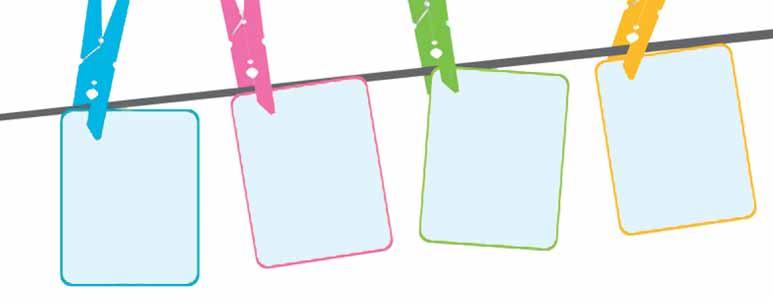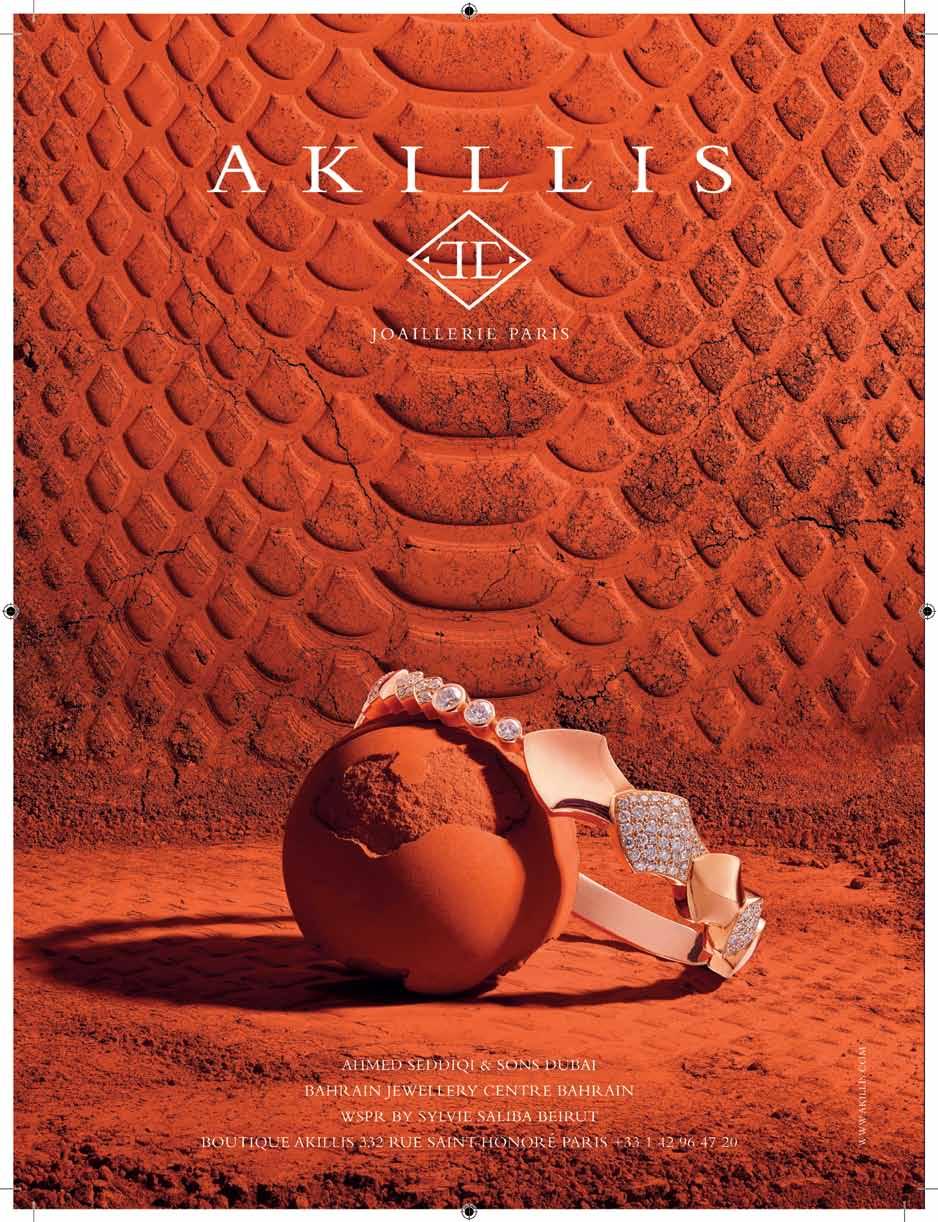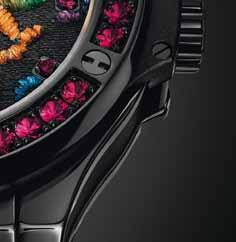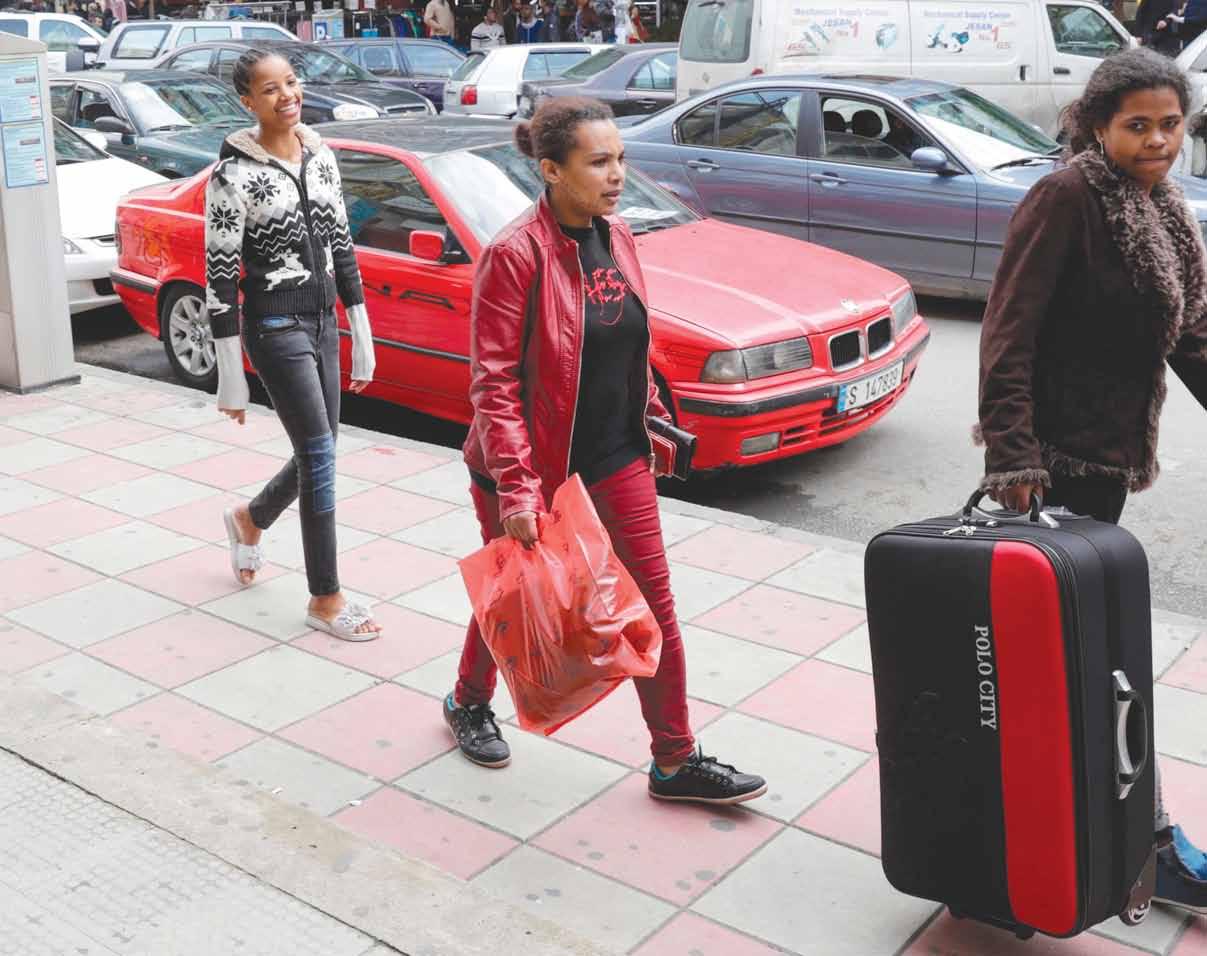
14 minute read
From movies to Concerts: Five Ways the Coronavirus is Affecting Hollywood and Entertainment
from How Religious Fundamentalism and Right-Wing Populism Contributed to Amazon Forest Fires
by المجلة
ealth H
Addressing Arthritis, Hearing Loss, and Cataracts will Help Preserve your Independence Common Physical Problems that Threaten Your Driving Skills
by Harvard Health Letter

Older age brings lots of physical changes, like stiffer joints and difficulty seeing or hearing. Those developments may not cause disability, but they may have an effect -- even a subtle one -- on your driving. That›s why it›s smart to be proactive once you notice physical changes, to find out how each condition can jeopardize your driving skills, your safety, and the safety of others on the road.
COMMON AILMENTS
There are many physical changes that can affect your driving skills. The following are among the most common.
Arthritis. The wearing away of cushioning (cartilage) around the bones in your neck, shoulders, hands, hips, and knees can lead to pain, stiffness, and driving challenges. «Hand pain may make it hard to grip a steering wheel. Hip and knee pain can make it tough to get in and out of a car, especially if the car sits low or high. Knee pain may make it painful to push a gas pedal. And neck pain may reduce your ability to turn your head when you›re backing up or changing lanes,» says Dr. Robert Shmerling, clinical chief of rheumatology at Harvard-affiliated Beth Israel Deaconess Medical Center.
Hearing loss. Losing your ability to hear can make it harder to detect hazards, such as an ambulance approaching an intersection.
«Even though most people think of hearing loss as involving both ears, hearing loss of one ear is also a problem. It makes it difficult to understand where sounds are coming from in space. So although one might hear an ambulance approaching, it might take more time to look around and figure out where it›s coming from, which could be dangerous,» says Dr. David Jung, an ear specialist with Harvard-affiliated Massachusetts Eye and Ear.
Cataracts. A cataract is a clouding of the normally clear lens of the eye. The condition strikes half of all Americans ages 75 or older. «A cataract impairs your ability to identify targets and distances, and determine braking times.
ealth H

Cataracts also affect how much contrast you can see, especially at night, which could mean that you won›t notice a dark object on the road,» says Dr. Roberto Pineda, a cataract surgeon at Massachusetts Eye and Ear.
Neuropathy. Neuropathy is a numbness, tingling, or burning that commonly occurs in the extremities, especially the feet and calves. «Neuropathy in the feet can make driving hazardous if you can›t feel the pedals,» says Ann Hollis, an occupational therapist who conducts
IS YOUR DRIVING IMPAIRED?
For example: «In most cases, hearing loss occurs slowly over time. So it›s difficult to identify a point at which the hearing loss makes it unsafe to drive,» Dr. Jung says. The big tip-off: «If you notice increasing difficulty hearing in everyday situations. At that point, it makes sense to see an ear, nose, and throat specialist and an audiologist to have your hearing assessed,» Dr. Jung advises.
Indeed, if any physical changes interfere with your day, they could be driving hazards. Some red flags: «You may notice that you have a harder time holding objects, walking well, getting up from chair, or reaching above your shoulders,»
Dr. Shmerling says.

DRIVING AND COGNITION
The mental sharpness of our younger days tends to soften as we get older. That can translate into a slowed reaction time when we›re driving, and may require that we maintain more distance than usual from the cars ahead of us, avoid driving during the busiest times of day, and use other routes to avoid high-traffic intersections.
Drivers with more serious cognition changes, such as mild cognitive impairment, are at risk of becoming confused and getting lost. A mental health screening and driving assessment will help determine if it›s still safe to get behind the wheel or if it›s time to use an alternative means of transportation.
MAKING ADJUSTMENTS
Driving assessment experts don›t aim to take away your keys; they offer advice and support to help you improve your driving skills. In some cases, that may be a matter of addressing an underlying condition, such as getting hearing aids if you have hearing loss, starting a strength training regimen to improve muscle strength and reduce arthritis pain, or getting surgery to remove cataracts that are clouding your vision.
Improving your skills may also require modifications to your car to make up for physical deficiencies. An example would be hand controls on the steering wheel if neuropathy is interfering with your ability to push the pedals.
In other cases, you may just need to brush up on the driving skills that seem a little rusty. A refresher course can be especially useful if your car has hightech new gadgets you›re not entirely sure how to use, or if you›re not up-to-date on the latest driving laws.
Po rt

ra it
Majalla Celebrates 40 Years Since Its First Issue
by Moncef Al-Mazghany
What’s in a Name? The name “Majalla” literally means “magazine” in Arabic. Some might wonder why our publication has such a simplistic name. When plans for the magazine were being laid out in the late 1970s, it was originally going to be named “Majallet Asharq Al-Awsat” (Middle East Magazine), but then the founders opted for a shorter name “Asharq”. However, that would have led to other problems as another Saudi magazine already had that name, as such founders Hisham and Ali Hafez decided to simply use the first part of its original name and thus the moniker “Al-Majalla” was born. The first issue of Majalla was published in February 1980 and since then it has become one of the most influential publications in the region and beyond. Majalla was founded as the sister publication of the Asharq Al Awsat newspaper, both of which are subsidiaries of the Saudi Research and Marketing Group, a media company founded by Prince Ahmad Bin Salman Bin Abdel Aziz in the year 1978.
Beyond a Cover The first issue of Majalla had an eye catching cover which featured an American soldier, and the caption “What is America Planning?” Right off the bat, this showed that Majalla is a political affairs publication. Nevertheless, its founders wanted Majalla to be unique and were adamant that articles featuring other topics are included. Unlike other Middle Eastern political affairs magazines, Majalla became known for having articles on art, literature, technology, cinema, fashion, health and a menagerie of different topics. A Variety of Topics and a Balance in Opinions Prince Ahmad Bin Salman had a philosophy when it came to news publications: always strive for a variety of topics and a balance of opinions. Asharq Al-Awsat followed this philosophy and Majalla is no different. As a result, Majalla always avoids zealous political views, and always aims to have writers who present varied opinions. This way, Majalla reflects our diverse world teeming with different point of views.
Influential Writers Who Have Written for Majalla Many of the most influential writers in the Arab world wrote for Majalla. Late Sudanese writer and author of “Season of Migration to the North”, Tayeb Salih used to write a weekly column for Majalla where he would explore various literary themes. Readers enjoyed his simple writing style that was easy to digest. Egyptian writer Ahsan Abd El Qadoos also had a weekly column entitled “Debates at the Political Café”. Although this was a political column, Abd El Qadoos presented in the themes in a creative way through a dialogue between an elderly man and young man who met at a local café to debate political events that happened between 1976 and 1978. In doing so, Abd El Qadoos eloquently presented the generational divide when it comes to political views. Other writers who graced this publication include Egyptian Nobel laureate Naguib Mahfouz, satirical writer Mahmoud El Sadany, as well as Fahmy Huwaidy, Ahlam Mostaghanamy, Latifa El Sholan, Jafar Abas, Ali El Amem, and British diplomat Patrick Seal. During a certain time, Kurdish poet Buland Haydari was in charge of the publication’s cultural section, and his major contributions greatly expanded the section. If any of our readers likes the fact that a large section of the magazine is dedicated to art, literature and film then you have Haydari to thank for that. To this day, esteemed individuals still write for Majalla, for instance there is American diplomat Dennis Ross, political analyst Joseph Braude, Hanin Ghaddar of the Washington Institute and a number of other talented journalists from around the world.
Editors-in-Chief from Across the Region All great news publications need great Editorsin-Chief. Despite the fact that Majalla is a Saudi publication, not all of its heads were from Saudi Arabia. For instance, Majalla has had some Egyptian chiefs such as Emad El Din Adeeb, and Lebanese chiefs such as Abd El Karim Abo El Nasr. Naturally, Majalla also had many Saudi editors-inchief such as Uthman El Ameer, Abd El Rahman El Rashid and his vice chief Matar El Ahmadi, Abd El Aziz El Khamis, and Hani Nakashbondi. This tradition of cross regional editors-in-chief continues to this day as the acclaimed Lebanese writer and journalist Ghassan Charbel is our current editor-inchief.
Expanding the Publication’s Horizons Majalla started out as an Arabic language magazine, however since its founders wanted the publication to have a wide outreach, they soon expanded the publication’s lingual range. Soon enough, there was an English version of the publication began circulating, then a French version and finally a Farsi version. This range of languages increased our global readership, and more importantly presented a variety of topics and news pieces. Even when two of our publications have stories on the same topic,
it is often the case that English language writers present a different take subject than Arabic language writers, and the same can be said for Persian and French language writers. As such, Majalla has a unique distinction of presenting issues through different lenses, thereby giving readers a complete picture of the current affairs concerning the world today.
More than Words Like many other Arabic publications, Majalla prides itself for housing some of the most talented caricature artists from the region. One of the most famous caricature artists who drew for Majalla was Lebanese artist Mahmoud Kahil, who was known for signing his artwork with the penname “El Ghorab” (which literally means The Crow in Arabic). Today, Ali El Mandalawy provides us with the caricatures that accompany our Profile section, which gives a brief biography of prominent

individuals of the present and past. Majalla has always had an eye for the unappreciated art of caricatures, for instance the publication interviewed many important caricature artists from the region such as Mohamed El Zawawy, late Palestinian artist Nagy El Ola and Sudanese artist Elshab Elmaqdad. Furthermore, in 1989, Majalla hosted the first “Arab Caricature Festival” in London, which invited Arab caricature artists who worked in Arab publications.
Overcoming Adversity The Middle East is never an easy place to for press publication. Throughout the last 40 years many news outlets have been shut down either through poor sales, or forced closings. However, Majalla has been able to overcome these challenges, and remain one of the mainstays of Arab weekly news. Being based in London gave Majalla an advantage of learning the British way of press, in which publications attract readers through diverse opinions rather than enforced views.
40 Years Strong French writer Albert Camus famously said that journalists are the “historians of the moment”. For the past 40 years, Majalla has been recording the most important news stories that have been rocking the region as well as the globe. The last 40 years of Majalla issues can now be seen as a historical archive of what went on for the past 4 decades. We here at Majalla would like to thank our readers who have stuck with us since 1980, and would like to welcome all new readers for whom this might be their first time reading our magazine. We hope to see you all again in 10 years time when we start celebrating 50 years of publication. So from the writers, editors, artists, page designers and every member of our staff, thank you for all your support, a magazine is nothing without its readers.
My Tenure as Editor: From the Battle for Change to Majalla’s Red Border
In the evolving world of journalism, newly appointed editors-in-chief like to take on the role of a revolutionary leader. After filtering the comrades one by one, they eliminate secret agents, fearing any spies that might affect the national security of his wisely led office.
Why not? After all, planting spies and enlisting secretaries are tools that have been used in espionage throughout history.
The new leader then uproots their predecessor’s legacy to begin their enlightenment program. Without getting into too much detail, you only need to look at the troubled state of the world to see that this is an accurate illustration of the state of the press.
In August 1985, I became editor-in-chief of Majalla, replacing my colleague Imad Al-Din Adib, who was preceded by Abed Al Karim Abu Al Nasr. It is important to note no one ever willingly resigns from this post, whether in this publication or any other in the world. This applies to every editorin-chief, including myself, but the circumstances of each departure differs.
I took on this position in my 30s against two backdrops: as a Saudi Arabian and a journalist on Fleet street, which was the most important location for journalism in the world.
Indeed, I had inherited a system of working that I was pitted against. Friends and new acquaintances raised the banner of revolution and demanded changes, giving their input on how to transform the magazine. As a result, I made a considerable amount of changes which I admit I truly regret.
When the dust had settled, I looked at what else I could change. After pondering for a while, the victim became the magazine’s cover. The first few issues of Majalla had a striking red border on the cover, so I decided to remove it.
The founders of Majalla, brothers Hisham and Mohammad Hafez, then called me and said, “Othman, you removed Majalla’s red border. We stand by your decision, but we have a surprise for you; this border only frames two magazines Time and Majalla, and Time magazine has made a trademark registration error and therefore we have the right to use the red border, so why did you remove it?” Thus, the red frame was reintroduced. It was later removed again, but eventually the iconic red border design made a bold return.
by Othman Al-Omair























